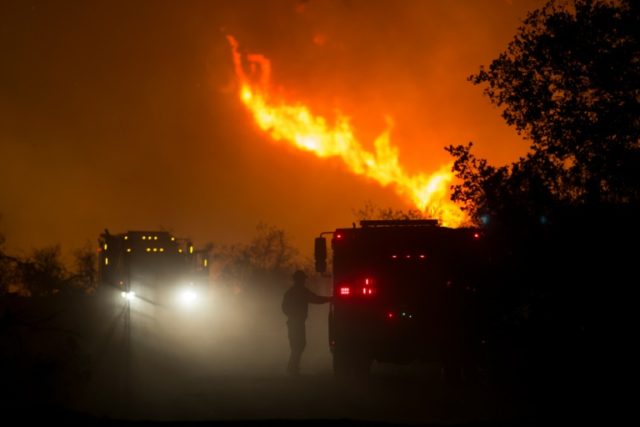Los Angeles (AFP) – Tens of millions of dead trees, record temperatures in June and persistent drought can only mean one thing for the American West this fire season: it’s going to be a tinderbox.
Experts are already predicting that Alaska and the Southwest will be hit hard by fires, while California could see its worst season yet.
“Many areas of California are still in severe and exceptional drought,” Daniel Berlant, spokesman for state firefighting agency Cal Fire told AFP.
“Over the past couple months, wildfire activity has quickly increased,” he said.
Across the United States, approximately 3,280 square miles (8,500 square kilometers) have gone up in flames since the beginning of the year, including land burned by the 10 major fires currently raging (four of which are in the southwest states of Arizona and New Mexico).
Near Santa Barbara, north of Los Angeles, the so-called Sherpa fire in the Los Padres National Forest is raging full speed, fanned by strong winds.
Thursday to Friday, it spread from two to six square miles, prompting authorities to declare a state of emergency and intermittently shut highways.
The fire is the tourist region’s largest since 2009, a Santa Barbara spokeswoman said.
Nearly 270 buildings have been threatened, hundreds of residents have been forced to evacuate and 1,230 firefighters have battled the flames.
At the top of Northern California, the Pony Fire has burned some four square miles.
And two weeks ago, a separate blaze forced the evacuation of 5,000 people in an affluent suburb of Los Angeles home to a number of celebrities, including Jessica Simpson and members of the Kardashian family.
– Fire-prone –
After four years of record drought in California, the slightest spark can set a wildfire ablaze.
Forests, especially those in the Sierra Nevada, were put through the wringer, with 29 million trees dead — a number only compounded by an epidemic of bark beetles that eat the trees’ roots.
California Governor Jerry Brown has even mobilized emergency funds for what he has called “the worst epidemic of tree mortality in its modern history.”
The dead trunks lying in the forest are equivalent to fuel waiting to be ignited, said Lynne Tolmachoff, a Cal Fire spokeswoman.
Another major risk factor is the sheer heat, with temperatures not only poised to set new records but also becoming dangerous in the southern half of California in the coming days.
In Los Angeles, thermometers are expected to reach 99 degrees Fahrenheit (37 Celsius) and in Palm Springs, the number climbs all the way to 117 degrees Fahrenheit.
“We’re only in June. If temperatures continue like this, it’s going to make things difficult,” said Tolmachoff.
The northwestern states of Washington and Oregon are also facing a drought. Last year, Washington state had the worst fire season in its history.
The primary fire season is in June and July, and two areas are watched particularly closely — Alaska and the southwest, according to the website of the National Interagency Coordination Center’s predictive services program.
“As seasonal drying progresses, expect above normal levels of significant fire potential to remain dominant though at least early July,” it added.

COMMENTS
Please let us know if you're having issues with commenting.